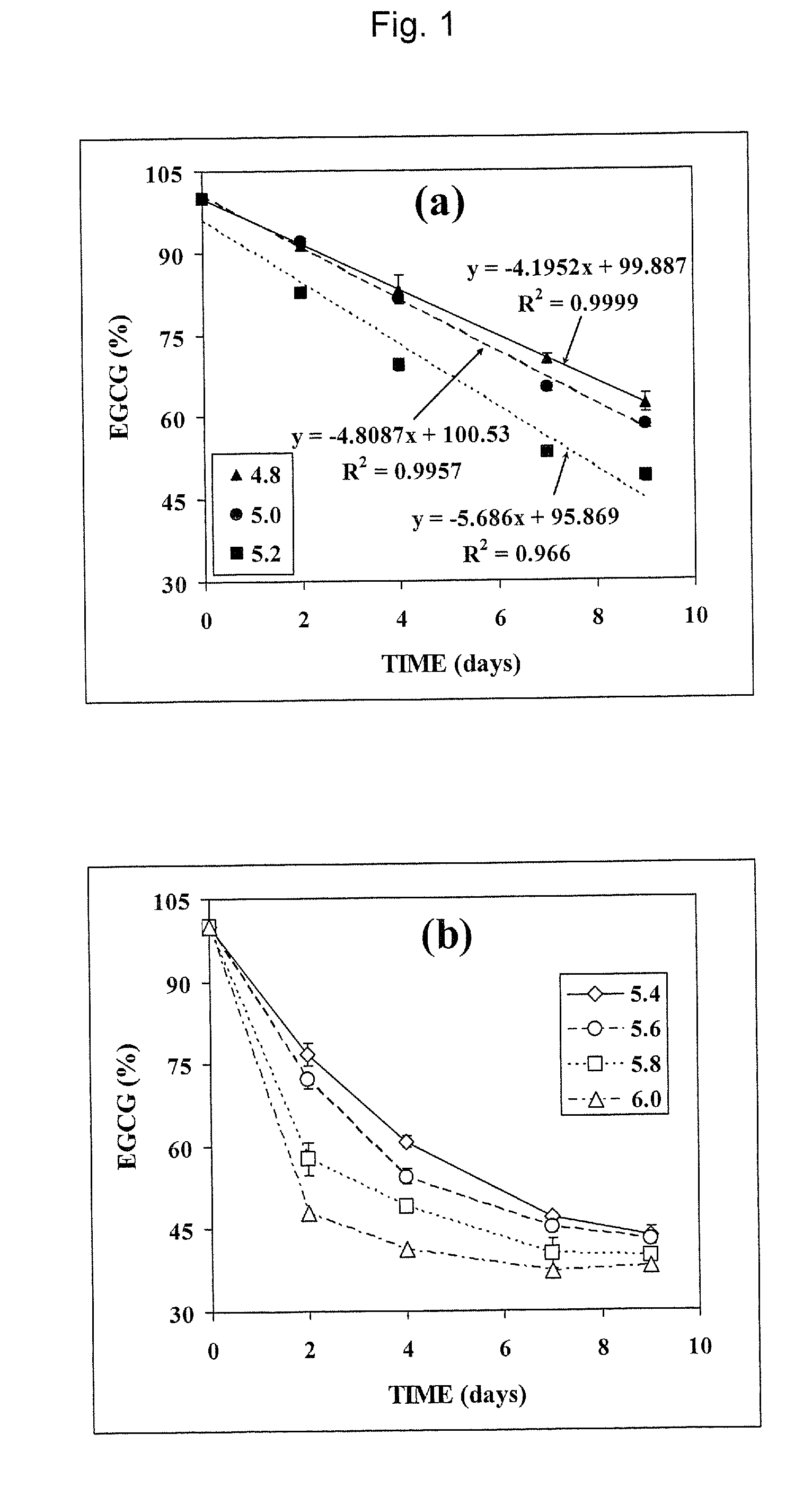Liquid Compositions Comprising Non-Digestible Oligosaccharides and Green Tea Catechins
a technology of catechins and liquid compositions, which is applied in the field of liquid compositions comprising non-digestible oligosaccharides and green tea catechins, can solve the problems of requiring refrigeration, short shelf life, and no single treatment to both scavenge free radicals, and achieve the effect of increasing the stability of short-chain fructo-oligosaccharides
- Summary
- Abstract
- Description
- Claims
- Application Information
AI Technical Summary
Benefits of technology
Problems solved by technology
Method used
Image
Examples
example 1
[0064]A liquid composition was prepared containing 7.3% short-chain fructooligosaccharides (scFOS) and 0.22% green tea extract, representing 1100 mg scFOS (10% overage) and 12 mg EGCG (20% overage) per 15 ml, respectively. In the example presented below, ascorbic acid and anthocyanidins from cranberry juice powder serve as free radicals (oxygen) scavengers. A person skilled in the art may easily select the best oxygen-scavenging substances for inclusion in the formulation without undue experimentation, The adjustment of pH to 4.80 is accomplished with 10 N NaOH solution.
[0065]A liquid composition was prepared by combining the following ingredients:
IngredientsWeight (%)*Fructo-oligosaccharides7.3**Green Tea Extract0.22Carrageenan0.25Sodium citrate dehydrate0.86Citric acid anhydrous0.40Methylparaben0.12Sorbitol 70%4.00Xylitol5.00Disodium edentate0.10***Cranberry juice powder0.35Cranberry flavor0.30Ascorbic acid0.20Purified water80.9*NutraFlora ® scFOS ™ (GTC Nutrition Co)**Greenselect...
example 2
[0066]This liquid composition differs from the previous example only in that scFOS and EGCG are increased to 23.17 and 0.35%, respectively and 1% elderberry juice powder (Cape Cod Biolab) replaces cranberry juice powder as additional oxygen scavenger in the formulation along with 0.20% ascorbic acid.
example 3
[0067]This liquid composition differs from previous examples in that it contains 800 mg of scFOS and 200 mg of inulin (Raftiline GR, Orafti Food Ingredients, Netherlands, and 10 mg EGCG per 15 ml. Ascorbic acid (0.2%) and cranberry juice powder (0.35%) serve as oxygen scavengers.
PUM
| Property | Measurement | Unit |
|---|---|---|
| pH | aaaaa | aaaaa |
| pH | aaaaa | aaaaa |
| pH | aaaaa | aaaaa |
Abstract
Description
Claims
Application Information
 Login to View More
Login to View More - R&D
- Intellectual Property
- Life Sciences
- Materials
- Tech Scout
- Unparalleled Data Quality
- Higher Quality Content
- 60% Fewer Hallucinations
Browse by: Latest US Patents, China's latest patents, Technical Efficacy Thesaurus, Application Domain, Technology Topic, Popular Technical Reports.
© 2025 PatSnap. All rights reserved.Legal|Privacy policy|Modern Slavery Act Transparency Statement|Sitemap|About US| Contact US: help@patsnap.com

